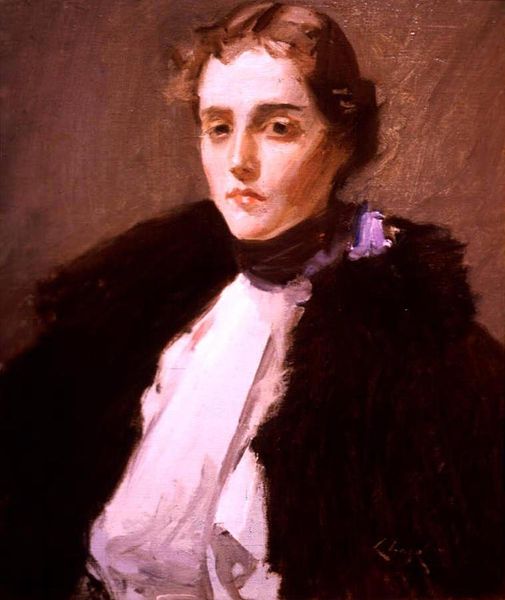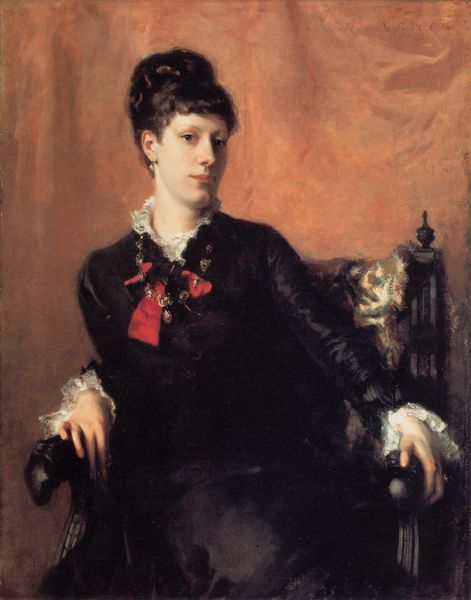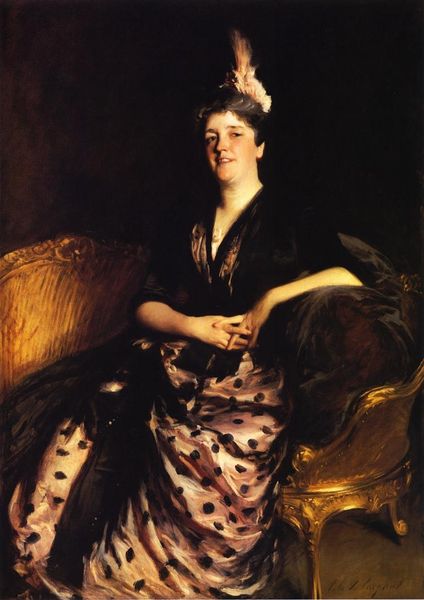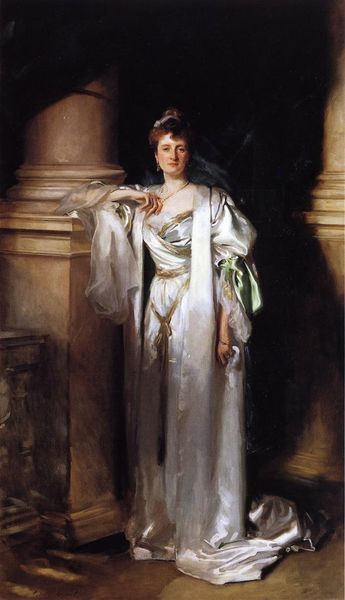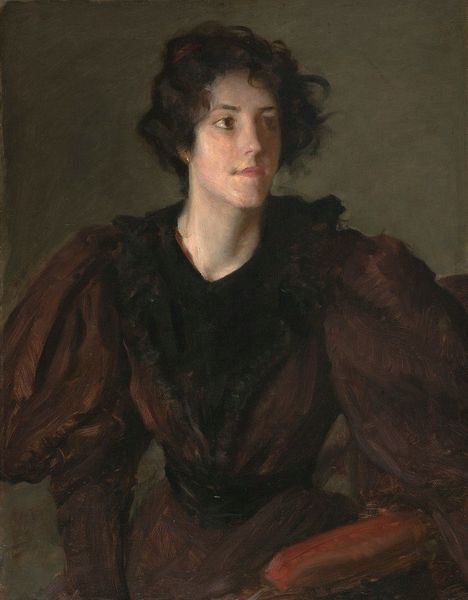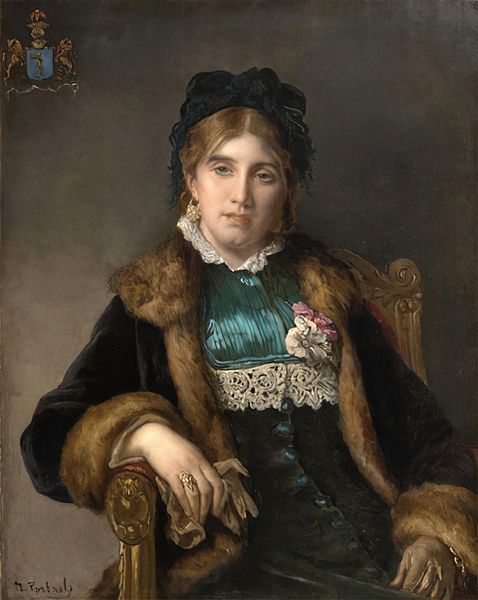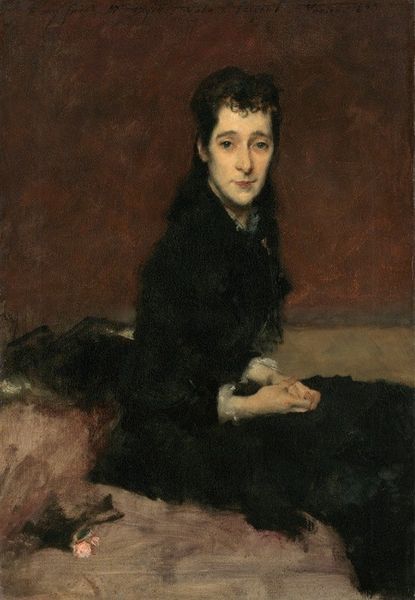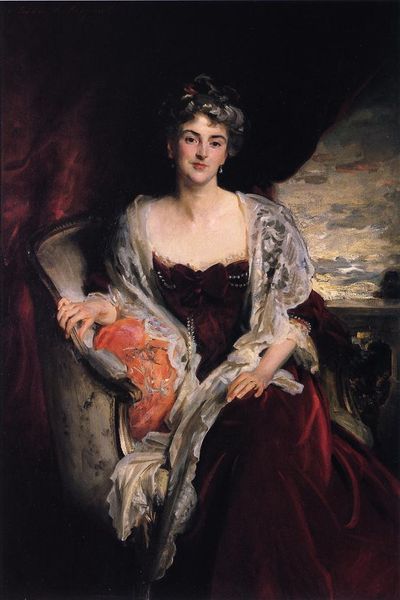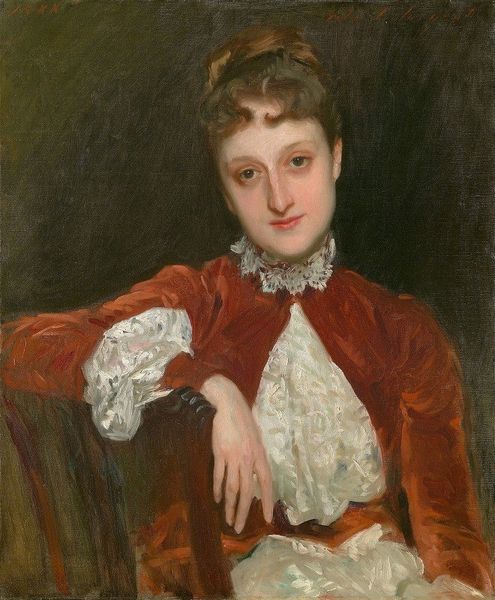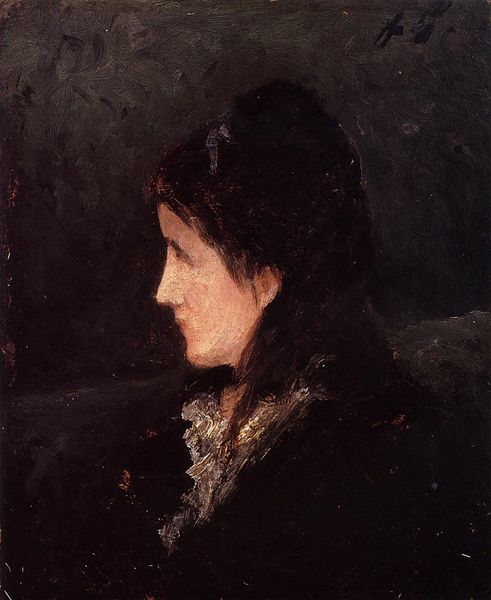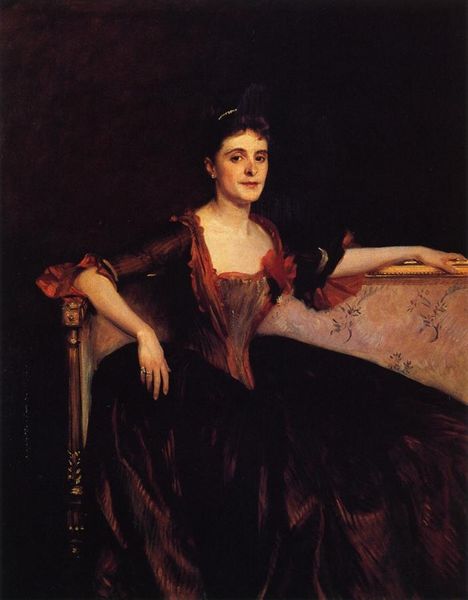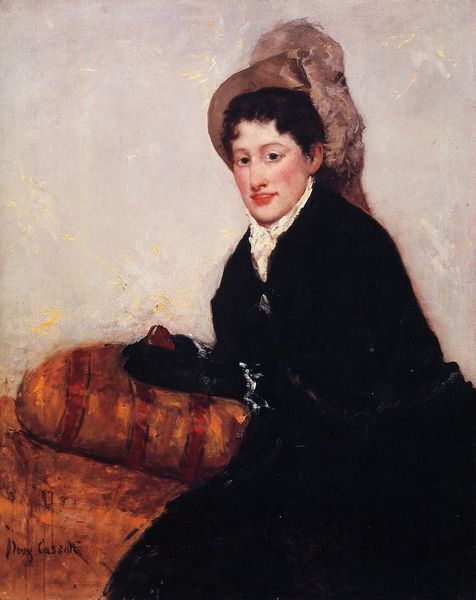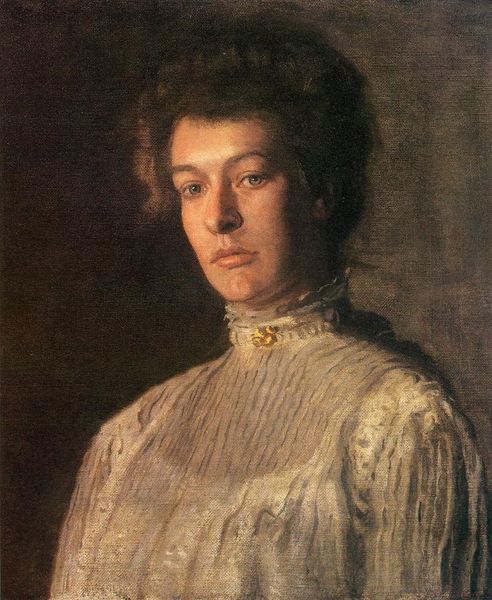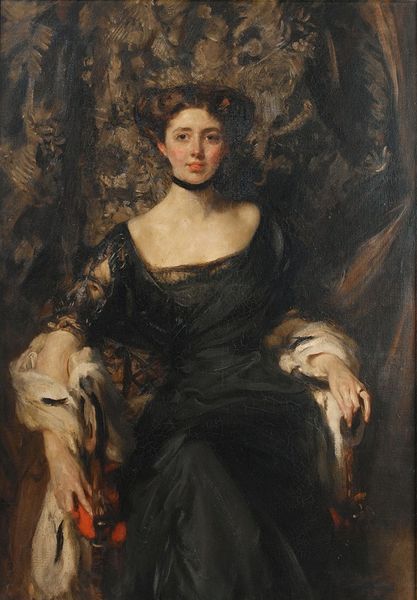
Copyright: Public domain
Curator: Before us, we have John Singer Sargent’s oil on canvas, "Portrait of Mrs. Alice Brisbane Thursby," completed in 1898. Editor: There's a kind of opulent restraint in the tones; a lot of blacks and browns softened with creams. A reserved monumentality that must have been carefully considered between painter and sitter. Curator: Indeed. Sargent masterfully employs a limited palette to convey a sense of elegance and sophistication. Observe how the composition directs the viewer's eye. It begins at the subject’s gaze, sweeps down along the string of pearls to the purple flowers pinned on the velvet, and concludes on the richly detailed folds of her maroon dress. The dress and its complex, but carefully composed undulations create both visual interest and texture. Editor: Speaking of texture, consider the actual fabrics – velvet, silk, and those pearl beads. There's a tangible quality; they seem to beckon. It's hard not to consider the material reality of each piece of clothing, where it was woven or grown, how it made its way onto Mrs. Thursby's person, and the cultural impact of that industry. Curator: These portraits by Sargent function as both a record of his skill with the brush and as signifiers of the sitter’s elevated social standing. Notice how her poised demeanor and confident gaze reflect her status. She projects ease, an assured presence, almost as if inviting us into her salon. Editor: I find myself thinking about the labor involved, though. Not only Sargent's brushstrokes, but also the underpaid workers who dyed the cloth and strung those beads. Who sat at home to spin the yarn. So much of art, I find, has hidden histories, beyond the apparent narrative of the elite and elevated. It complicates what is being memorialized here, by adding this shadow. Curator: It also adds to its depth. What do you think we should emphasize for our audience about this work? Editor: I think a lot of different details jump to life when we realize it wasn't conjured out of nothing. These are not merely figures inhabiting some pictorial space but they have their own world, and are composed by work, place, and history.
Comments
No comments
Be the first to comment and join the conversation on the ultimate creative platform.
